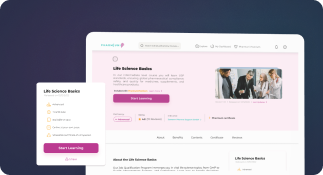GLP (Good Laboratory Practice)
Definition
Good Laboratory Practice (GLP) refers to a set of principles intended to ensure the quality, integrity, and reliability of non-clinical laboratory studies used to support research or marketing applications for products regulated by government agencies. GLP compliance applies primarily to the safety testing of chemicals and pharmaceuticals in laboratory environments.
GLP guidelines are enforced by regulatory bodies such as the U.S. Food and Drug Administration (FDA), the Organisation for Economic Co-operation and Development (OECD), and the European Medicines Agency (EMA). These guidelines establish a framework for planning, performing, monitoring, recording, reporting, and archiving non-clinical safety studies.
Detailed Explanation
Purpose and Importance of GLP
The primary objective of Good Laboratory Practice is to promote the generation of high-quality and reproducible data. This ensures that regulatory authorities can confidently assess the safety and efficacy of new pharmaceutical products, chemicals, and other regulated substances. GLP is crucial in toxicology, pharmacology, and environmental safety studies, where data integrity is essential for human and environmental health.
Core Elements of GLP Compliance
GLP compliance involves a structured approach to laboratory studies. Key components include:
- Study Protocols: Clearly defined objectives, methodologies, and procedures for each study.
- Standard Operating Procedures (SOPs): Detailed written instructions to ensure consistency and repeatability.
- Qualified Personnel: Trained staff with defined roles and responsibilities.
- Data Integrity: Accurate, complete, and secure documentation of all study data.
- Quality Assurance (QA): Independent auditing and monitoring to ensure compliance with GLP standards.
- Facilities and Equipment: Proper maintenance, calibration, and validation of laboratory instruments and environments.
- Archiving: Secure storage of study records and materials for regulatory review and future reference.
Applications of GLP
GLP is applied in various types of non-clinical studies, including:
- Toxicology studies (acute, sub-chronic, chronic)
- Pharmacokinetics and metabolism studies
- Environmental fate and ecotoxicology studies
- Safety pharmacology assessments
These studies are typically conducted during the preclinical phase of drug development to evaluate safety before human trials begin.
Global Harmonization and Regulatory Oversight
GLP standards are internationally harmonized through the OECD Principles of GLP, which are recognized by many regulatory authorities worldwide. In the United States, the FDA and the Environmental Protection Agency (EPA) enforce GLP regulations under 21 CFR Part 58 and 40 CFR Part 160, respectively. The European Union follows Directive 2004/10/EC and OECD guidelines.
Example of GLP in Action
Consider a pharmaceutical company developing a new drug. Before human clinical trials can begin, the company must conduct animal toxicology studies to assess the drug’s safety profile. These studies must be performed in compliance with GLP to ensure the data is valid and acceptable to regulatory authorities like the FDA or EMA. Any deviation from GLP could result in the rejection of the data, delaying the drug development process.
Benefits of GLP Compliance
- Ensures scientific credibility and reproducibility of data
- Facilitates regulatory approval and market access
- Reduces risk of data manipulation or errors
- Improves operational efficiency and laboratory management



